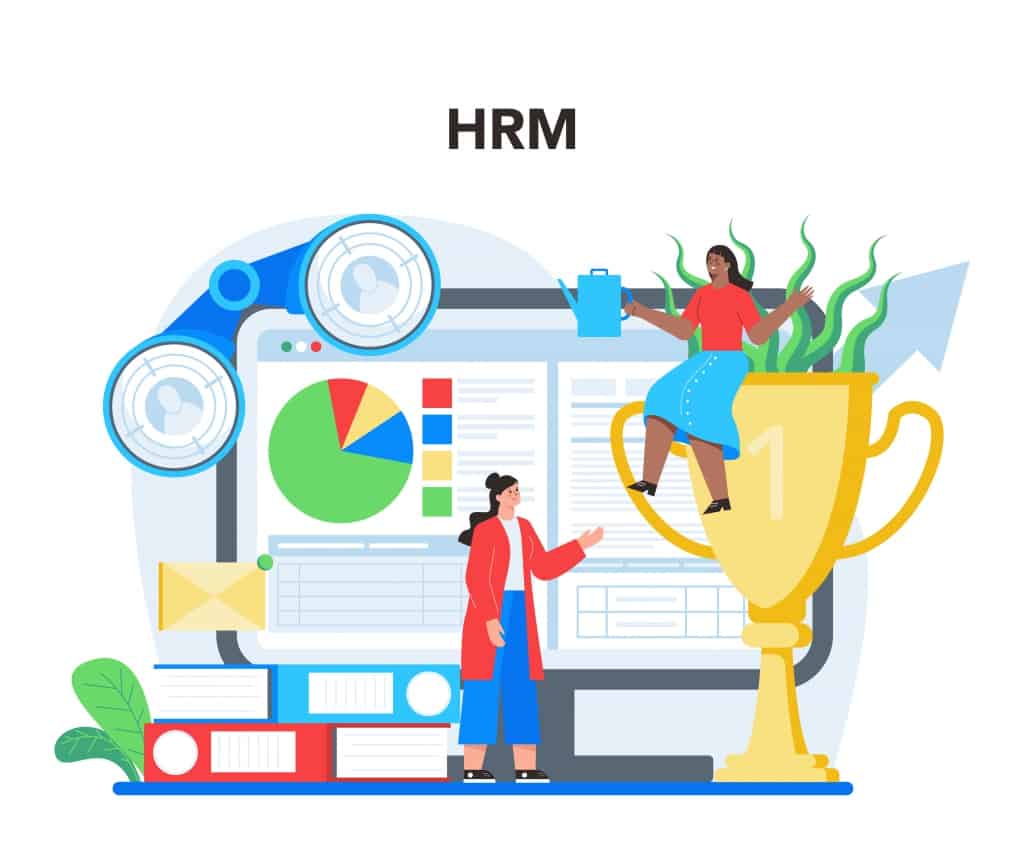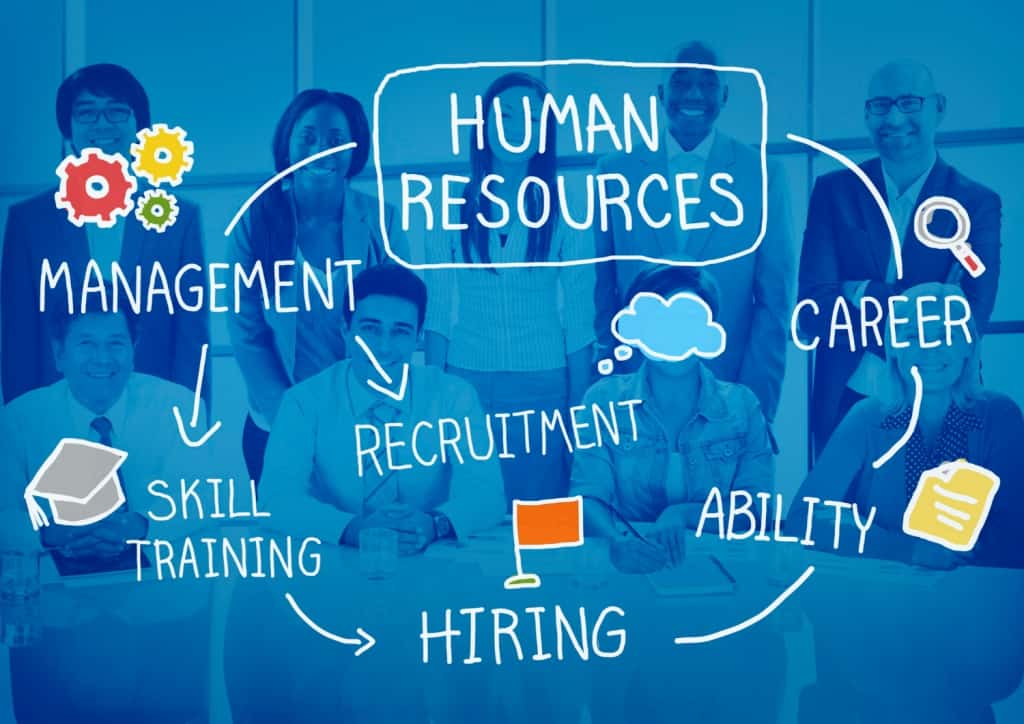Human resources are the backbone of any successful business. Managing the workforce effectively can be a challenging task, especially as organizations become more complex and diverse. This is where Human Resource Management (HRM) comes into play. HRM is a vital function in any organization that helps to attract, develop, and retain the right talent.
In this article, we will explore the 4 functions of human resource management and their importance in ensuring the success of a business. Whether you are an HR professional, a business leader, or an employee, understanding these functions is crucial to achieving your goals and objectives.
So, Let's Start!
- What Is Human Resource Management?
- The Differences Between HRM and Strategic Human Resource Management
- The 4 Functions of Human Resource Management
- 5 Steps In Human Resource Management
- Skills Needed For Human Resource Management
- Differences between HRM Staff and Managers
- The Importance Of HRM In Corporation/Enterprise
What Is Human Resource Management?
Human Resource Management (HRM) is the department that manages an organization's workforce.
HRM involves a range of activities aimed at maximizing the productivity and performance of employees while also creating a positive work environment.

The 5 Elements of HRM are:
- Recruitment and selection
- Training and development
- Performance management
- Compensation and benefits
- Employee relations
For example, if a company is experiencing a high employee turnover rate. The HRM department would be responsible for identifying the root causes of the turnover and developing strategies to address the issue. This could involve interviewing departing employees to gather feedback, reviewing compensation and benefits programs, and developing programs to improve employee engagement.
The Differences Between HRM and Strategic Human Resource Management
Strategic Human Resource Management (SHRM) and Human Resource Management (HRM) are two concepts that are closely related but have some key differences.
| Human Resource Management (HRM) | Strategic Human Resource Management (SHRM) | |
| Focus | HRM focuses on operational efficiency and compliance with legal requirements | SHRM focuses on aligning HR strategies with the overall strategic goals and objectives of the organization |
| Scope | HRM is concerned with managing the day-to-day HR activities | SHRM is concerned with working the organization's human capital to achieve a sustainable competitive advantage |
| Timeframe | HRM is short-term oriented | SHRM is long-term oriented |
| Importance | HRM is important for ensuring the smooth functioning of HR activities | SHRM is critical for the long-term success of the organization |
In summary, while both HRM and SHRM are essential for managing an organization's human resources, SHRM takes a more strategic and long-term approach to managing human capital, aligning HR strategies with the organization's overall strategic objectives.
The 4 Functions of Human Resource Management
1/ Acquisition Function
The acquisition function involves identifying the organisation's talent needs, developing a plan to attract the right candidates, and executing the recruitment process. Here are some activities included:
- Create job descriptions and specifications
- Develop sourcing strategies
- Building relationships with potential candidates
- Develop recruitment marketing campaigns
For organizations to seek and recruit top talent, this function is essential. However, it must be borne in mind that developing a talent acquisition strategy must align with the organization's overall business strategy and goals.
2/ Training and Development Function
The training and development process requires the following two stages:
- Identify employee training needs. Assess employees' skill levels and identify areas for further training (by performance reviews, employee feedback, or other assessment methods).
- Create effective training programs. Once training needs are identified, the HR team works with subject matter experts to create training programs designed to address those needs. Training and development programs can take various forms, such as on-the-job training, classroom training, e-learning, coaching, mentoring, and career development.
- Conduct training programs. Once the training programs are created, the HR team implements them by scheduling training sessions, providing resources and materials, and evaluating the effectiveness of the training.
- Follow-up. Regular feedback and follow-up are essential to ensure employees can apply the skills and knowledge they have learned on the job.
Practical training and development programs can improve employee performance and productivity, reduce turnover, and enhance the organization's ability to adapt to changing business needs.

3/ Motivation Function
The motivation function focuses on creating a positive work environment to inspire and encourage employees to perform at their best. Một số điểm chính của chức năng này như:
- Develop strategies to engage and motivate employees.
HRM can provide incentives such as bonuses, promotions, and recognition programs and create opportunities for professional development and career advancement. For example, HRM may offer prizes to employees who exceed performance expectations or achieve specific goals.
In addition, HRM may also provide recognition programs and development programs to help employees acquire new skills and knowledge, which can increase their job satisfaction and motivation.
- Create a culture that fosters collaboration, trust, and mutual respect.
This includes providing employees with opportunities to share their ideas and opinions and promoting teamwork and communication. When employees feel valued and appreciated, they are more likely to be motivated to perform at their best.
Overall, effective motivation strategies can help to improve employee engagement, job satisfaction, and productivity, which can ultimately benefit the organization as a whole.
4/ Maintenance Function
Maintenance is a crucial function that involves:
- Manage employee benefits
- Manage employee relations
- Promote employee well-being
- Ensure everything complies with legal and regulatory requirements.
This function aims to maintain a positive work environment that supports employee satisfaction and retention while also protecting the organization from legal risks.
Employee benefits can include healthcare, annual leave, FMLA leave, sabbatical leave, fringe benefits, retirement plans, and other forms of compensation. HRM may also provide resources and support for employee well-being, such as mental health services, wellness programs, and employee assistance programs.
In addition, HRM has to manage conflict and promote a positive work culture. HRM may develop policies and procedures to address workplace issues and provide training programs to managers and employees on handling conflicts effectively.
HRM is also responsible for ensuring compliance with legal and regulatory requirements, such as labor laws, employment regulations, and safety standards.

5 Steps In Human Resource Management
The steps in Human Resource Management vary depending on the organization and the specific goals and objectives of the HR function. However, generally, the following are the essential steps in Human Resource Management:
1/ Human Resource Planning
This step involves assessing the organization's current and future workforce needs, forecasting employees' supply and demand, and developing strategies to fill any gaps.
2/ Recruitment and Selection
This step requires attracting, selecting, and hiring the most qualified candidates for available job positions. It includes developing job descriptions, identifying job requirements, sourcing candidates, conducting interviews, and selecting the best candidates.
3/ Training and Development
This step involves assessing the training needs of employees, designing and delivering training programs, and evaluating their effectiveness.
3/ Performance Management
This step involves setting performance standards, evaluating employee performance, providing feedback, and initiating corrective action if necessary.
4/ Compensation and Benefits
This step involves designing and implementing compensation and benefits programs that attract, retain, and motivate employees. It includes analyzing market trends, designing salary structures, developing benefits packages, and ensuring that the compensation and benefits programs comply with legal requirements.
5/ HR Strategy and Planning
This step includes developing HR strategies and plans that align with the organization's overall strategic goals and objectives. It includes identifying HR priorities, developing HR goals and objectives, and determining the resources needed to achieve them.

Skills Needed For Human Resource Management
Human Resource Management requires a wide range of skills to be successful. If you want to work in the Human Resource Management field, you may need some of the key skills, including:
- Communication skills: You must have excellent communication skills to communicate effectively with employees, management, and external stakeholders.
- Interpersonal skills: You need strong interpersonal skills to build relationships with employees, resolve conflicts, and promote a positive work environment.
- Problem-solving skills: You need to identify problems quickly and develop solutions to address them.
- Analytical skills: You must be able to analyze data and make data-driven decisions related to recruitment trends, employee engagement, and performance management.
- Strategic thinking: To become an HR professional, you need a strategic mindset to align with the organization's goals and objectives.
- Adaptability: HR professionals must adapt to changing business needs and priorities.
- Technology skills: HR professionals must be proficient in using HR technology and software, including HR information and applicant tracking systems.
Differences between HRM Staff and Managers
The main difference between HRM staff and managers lies in their organisational roles and responsibilities.
HRM staff are typically responsible for performing day-to-day administrative tasks related to HR functions, such as recruiting, hiring, and training employees. They may also maintain employee records and ensure compliance with HR policies and procedures.
On the other hand, HRM managers are responsible for overseeing the overall HR function and developing and implementing HR strategies that align with the organization's goals and objectives. They are involved in higher-level decision-making and may be responsible for managing a team of HR staff.
Another key difference is that HRM staff typically have less authority and decision-making power than managers. HRM managers may have the authority to make decisions related to employee compensation, benefits, and performance management. In contrast, HRM staff may have less power and need to seek approval from higher-level managers.

The Importance Of HRM In Corporation/Enterprise
Besides ensuring that the organization has the right people in the right roles, Human Resource Management is critical for the success of any corporation or enterprise. Here are some key reasons why:
1/ Attract and retain top talent
HRM is crucial in attracting and retaining the best employees by developing recruitment strategies, offering competitive salaries and benefits, and creating a positive work environment.
2/ Develop and maintain a skilled workforce
HRM ensures employees have the necessary skills and knowledge to perform their jobs effectively. This includes training and development programs, ongoing coaching and mentoring, and career development opportunities.
3/ Improve employee performance
HRM provides performance management tools and processes that help managers identify and address performance issues, set performance goals, and provide regular employee feedback.
4/ Promote a positive work culture
HRM promotes a positive work culture that aligns with the organization's values and goals. This includes creating a supportive and collaborative work environment, promoting work-life balance, and recognizing and rewarding employees for their contributions.
5/ Ensure compliance with legal and regulatory requirements
HRM ensures that the organization complies with labor laws and regulations, such as equal employment opportunity laws, wage and hour laws, and health and safety regulations.
Overall, HRM is crucial for the success of any corporation or enterprise because it ensures that the organization has the right people with the right skills and knowledge, and creates a positive work culture that promotes productivity, engagement, and employee well-being.

Summary
In conclusion, human resource management is critical for the success of any corporation or enterprise. It involves strategic planning, effective recruitment and selection, ongoing training and development, performance management, compensation and benefits, and employee relations.
If you want to be a part of HRM, you need to understand the four functions of human resource management and improve a wide range of skills.








